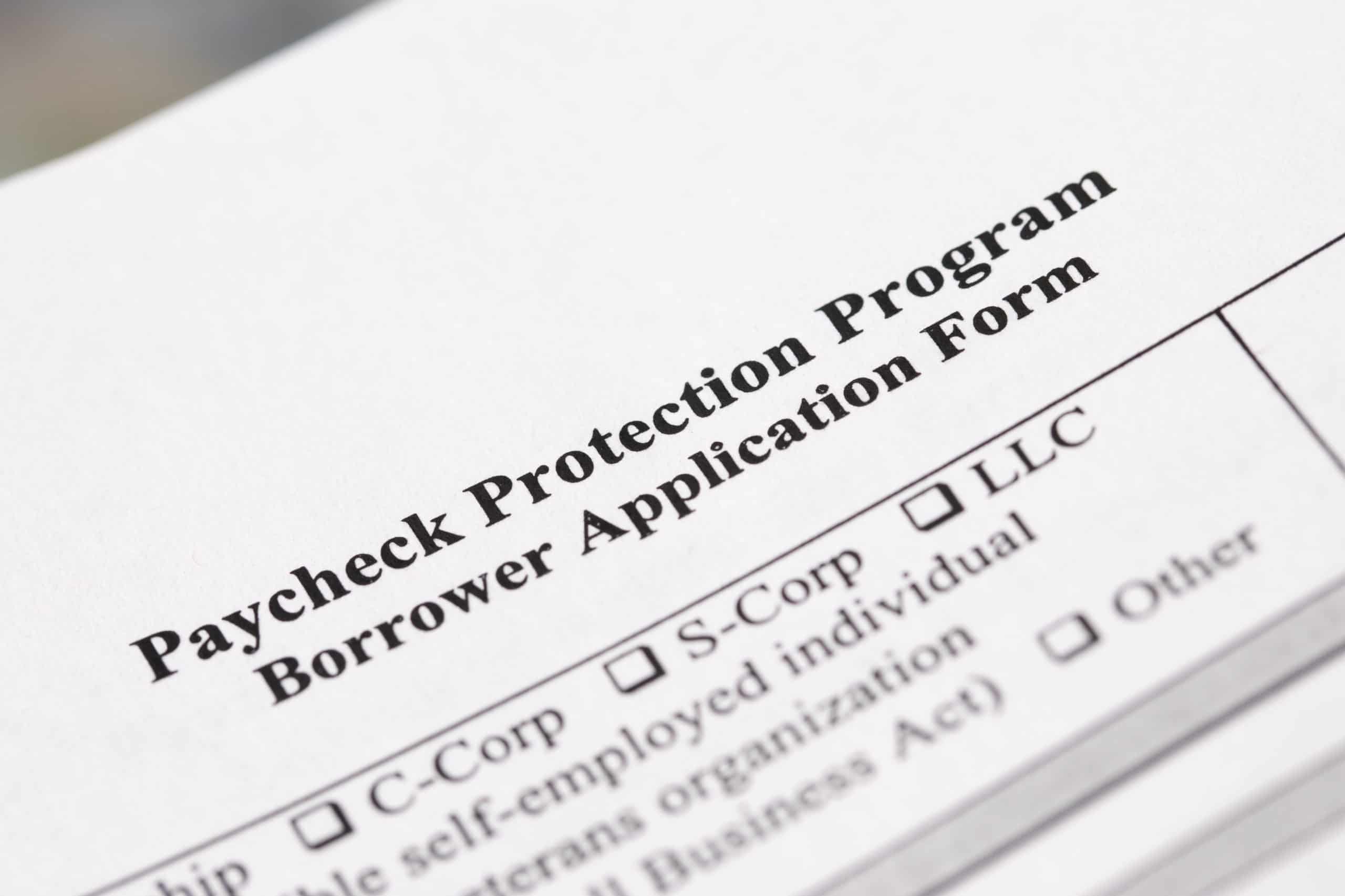The Consolidated Appropriations Act, passed at the end of December, provides a third round of SBA disaster loan assistance and SBA PPP loan opportunities for small businesses impacted by the coronavirus pandemic
Applications can only be submitted until the end of May or until the funding has been exhausted. Businesses that missed out on previous rounds of funding now have an opportunity to get some relief.
How Has the Pandemic Affected Small Businesses?
A recent survey shows that 84% of businesses have been impacted by the pandemic, and 43% reported being severely impacted by COVID-19. Businesses with four or fewer employees appear to be impacted the most.
This recent survey also shows that the majority of businesses (85%) used the Payment Protection Program (PPP) to stay afloat. Most borrowers (96%) planned to apply for loan forgiveness.
PPP loans and the EIDL program have helped millions of businesses keep their operations going through the pandemic. Now, a new round of funding aims to keep this trend going.
Paycheck Protection Program (PPP) Loans – What You Need to Know
Applications for the third round of PPP loans opened up in January and will be available through the end of May or until all funds are exhausted. The second round of funding ran out in August 2020, so more businesses now have the opportunity to gain access to much-needed funds.
The Consolidated Appropriations Act provides an additional $284 billion in funding for PPP loans, and it also created two tiers of loans: First-draw and Second-draw.
First-draw loans have the following terms:
- 1% interest rate
- 5-year maturity rate
- Deferred payments when applying for forgiveness
- Deterred payments for up to 10 months after the loan’s covered period if you do not apply for forgiveness
- No fees
- No personal guarantee or collateral
Some businesses that already received a PPP loan may qualify for a second loan of $2 million or less. First-time borrowers may apply for up to $10 million if they meet the SBA’s eligibility requirements.
PPP loans can be forgiven if a business meets certain requirements. Forgiven loans are tax-exempt, meaning that they are not considered taxable income.
Does Your Business Qualify for an SBA PPP Loan?
First-time PPP loans are available to the following businesses and organizations:
- Those with fewer than 500 employees and be eligible for SBA 7(a) loans
- Franchises that are independently owned
- Sole proprietors and independent contractors
- Non-profit organizations
- 501(c)(6) organizations
- Churches
- Food service and accommodation services with fewer than 300 employees at each location
If your business has already received a PPP loan, you may qualify for a second loan provided you meet the following requirements:
- Have fewer than 300 employees
- Used all of your previous loan funds
For loans greater than $150,000, you must prove that your business has experienced a 25% or greater loss in revenue between Q4 2019 and Q4 2020.
The third round of funding comes with more relaxed requirements, which makes it easier for more businesses to qualify and gain access to the funds.
For example, business owners who are delinquent on federal student loans now qualify for a PPP loan.
Under the latest legislation, $35 billion will be allotted for first-time borrowers that have 500 or fewer employees. If you have yet to apply for a PPP loan, you have a greater chance of obtaining a loan.
The legislation also provides an additional $15 billion for first-time borrowers that have fewer than 10 employees.
Funds are also allocated for businesses in low-and-moderate income areas.
How Does PPP Loan Forgiveness Work?
First and second round PPP loans may be forgiven if your business:
- Maintains its number of employees and compensation levels,
- At least 60% of the loan funds are used for payroll costs, and
- Loan funds are used for payroll costs and eligible expenses
Businesses can apply for forgiveness after all of the loan funds have been spent and at any point up until the loan’s maturity date.
The SBA provides detailed information on the loan forgiveness process.
Funds for minority, veteran, women-owned, and underserved businesses
Additional funds have been set aside by Congress to fund businesses that were left out of previous PPP rounds, including:
- $35 billion for first-time PPP borrowers
- $15 billion for first-time and $25 billion for second-draw PPP loans for those with 10 or fewer employees or loans less than $250,000 in low-or-moderate-income areas
- $15 billion in funding through local financial institutions
- $15 billion in funding through credit unions, insured depository institutions and farm credit system institutions
How to Apply for a PPP Loan
SBA-approved lenders will be accepting applications for PPP loans through May 31, 2021 or until the program’s funding runs out.
To apply:
- Complete the first-time borrower or second-draw loan application; and
- Submit your application to an SBA approved lender.
Payroll records and other documents will be required when applying for a PPP loan, including:
- Your tax returns for 2019 and 2020
- Documents that show the legal structure of your business
- Payroll records to verify the amount being requested
- Evidence that the pandemic has impacted your business
Apply ASAP
Although applications are being accepted through the end of May, it’s important to apply as soon as possible. The availability of funds is limited. The first round of funding only lasted a few weeks.
PPP loans combined with other expense-saving strategies, like offering cash discounts to customers, can help keep businesses operational through the pandemic.
SBA Economic Injury Disaster Loan (EIDL) – What You Need to Know
The EIDL is designed for small businesses and non-profits that have temporarily lost their revenue due to the pandemic. Thus far, the program has helped more than 3.7 million small businesses. As of February 2021, the program approved more than $200 billion in emergency funding to provide small businesses with working capital.
On March 24, 2021, the maximum loan amount was increased to up to 24 months of economic injury and $500,000 to give businesses more relief.
Initially, the program’s limits were six months of economic injury and up to $150,000 in funds.
Terms of the loan are favorable:
- 3.75% for businesses
- 2.75% for non-profit organizations
- No penalties or fees for pre-payment
- 30-year term
Those who receive these loans can use the funds for operating expenses and working capital. Collateral is required for loans over $25,000, and this can include your equipment, machinery, furniture and other assets.
Unlike the PPP loan, the SBA EIDL loan is not forgivable.
The EIDL Advance program provided up to $10,000 in grants to qualifying small businesses, but funding has since run out.
EIDL loans are only available for a limited time or until the funding has been exhausted.
Does Your Business Qualify for SBA Disaster Loan Assistance?
Small businesses, non-profits and agricultural businesses with fewer than 500 employees may qualify for this loan. Sole proprietors and independent contractors may also qualify.
Agricultural businesses can include operations involved in the production of food, ranching, livestock raising, aquaculture and other farming related industries.
A few of the qualifications for obtaining an SBA EIDL loan include:
- Not engaging in illegal activity
- Applicants not being more than 60 days delinquent on child support obligations
- Not deriving one-third of gross revenue from legal gambling
- Not being in the business of lobbying
- Not a member of Congress or a government entity
Businesses do not have to prove that they could not get credit elsewhere to be approved, and first-year tax returns will not be required. Approval for an EIDL loan can be based on credit scores.
How to Apply for an EIDL Loan
The SBA has streamlined the application process for EIDL Loans. According to the agency, it should take about two hours to complete the application. Although streamlined, the process is still a lengthy and complex one that requires:
- Disclosure: Describes the loan and the information that will be collected to determine eligibility. Once eligibility has been verified, you can move on to the next step.
- Business Information: The lengthiest part of the process. You will need to provide your income statement and other relevant business information.
- Business Owner Information: This section asks whether your business is wholly owned by another entity. If it’s owned by individuals, you will need to provide information on each owner with a 20% stake or more.
- Additional Info: This section asks questions about criminal charges against business owners and other information.
It takes approximately 21 days for applications to be reviewed and approved or denied.
Can You Apply for a PPP and EIDL Loan?
Yes. According to the SBA, you can apply for both a PPP loan and an EIDL loan provided that you don’t use the funds for the same expenses. For example, you cannot use the funds from your PPP loan and your EIDL loan to cover payroll expenses. They must be used for separate expenses.
PPP and EIDL loans provide businesses with a once-in-a-lifetime opportunity to get much-needed funding at favorable rates. PPP loans, in some cases, are forgivable. If your business has been negatively impacted by the coronavirus pandemic, it’s important to seek relief through these programs as soon as possible.





